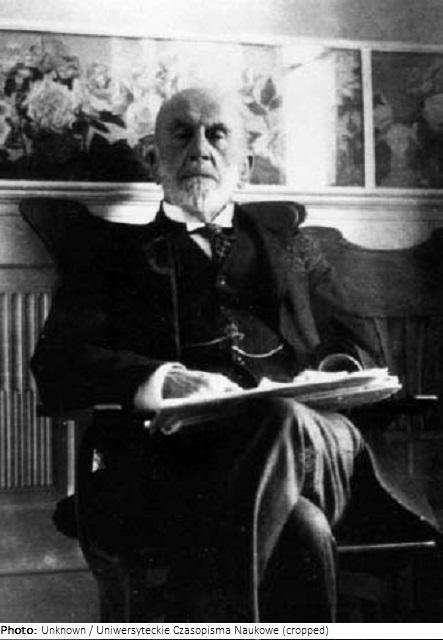Tadeusz Stryjeński

Biographical information
| Roles | Referee |
|---|---|
| Sex | Male |
| Full name | Ludwik Tadeusz•Stryjeński |
| Used name | Tadeusz•Stryjeński |
| Other names | Thadieu-Louis Stryjinski |
| Born | 29 August 1849 in Carouge, Genève (SUI) |
| Died | 3 June 1943 (aged 93 years 9 months 5 days) in Kraków (Cracow), Małopolskie (POL) |
| NOC |  Poland Poland |
Biography
Tadeusz Stryjeński was born in Switzerland, the son of an emigrated Polish engineer and a French mother. He studied first at the School of Applied Arts in Genéve, then at the Polytechnic in Zürich from 1868-1872, and for one year at the Technical University of Vienna (Wien), before working for three years as an architect for the Peruvian government in Lima. In 1877, he finished his studies at the École des Beaux-Arts in Paris.
In 1879, Stryjeński opened his own design and construction firm in Kraków. Together with Franciszek Mączyński (1874-1947), he designed the Chamber of Commerce building, which became known as the “Maison du Globe”, and rebuilt the facade of the Stary Theater. He realized the Wołodkowiczów Palace and, together with Władysław Ekielski (1855-1927), the building of the Aleksander Lubomirski Foundation, today the seat of the Cracow University of Economics. 1903-05 he built the church and monastery of the Discalced Carmelites. Stylistically, Neo-Renaissance, and Classicism predominated in his early œuvre, later Art Nouveau, and modernized Historicism. He was the first architect in Poland to use reinforced concrete structures. In 1906-1910 he was director of the Technical and Industrial Museum and in 1913, again together with Mączyński, designed a new home for the museum.
Around 1890, Stryjeński carried out restoration work in the churches of St. Krzyża and St. Mary, where, in gratitude for his efforts, his carved head was placed on the right exit of the choir of the church. Later, he was a conservator of the Central Commission for Research and Preservation of Artistic and Historical Monuments. He was also one of the designers and co-creators of the plans of Greater Kraków in 1910 and a member of the Society of Friends of Fine Arts in Kraków.
Stryjeński was awarded the Officer’s Cross of the Order of Polonia Restituta in 1926 and was made an Officer of the Legion of Honor. His son Karol (1887-1932) also became a well-known architect, sculptor, urban planner, graphic artist, and designer.
Referee
| Games | Sport (Discipline) / Event | NOC / Team | Phase | Unit | Role | As | |
|---|---|---|---|---|---|---|---|
| 1924 Summer Olympics | Art Competitions |  POL POL |
Tadeusz Stryjeński | ||||
| Architecture, Open (Olympic) | Final Standings | Judge |